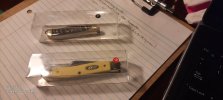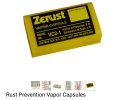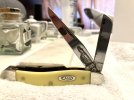I have 2 central ac units. keep house at ~75º. Today it is 90º & 97% here in southside Virginia. My basement is driest area at about 40% RH., as it is fed by one of the central ac units and it has a dehumidifier. House has basements plus 3 floors. May need to look at 1 or 2 more dehumidifiers, or lower ac to maybe....70º?. In meantime will get VCI papers and silica desiccants. Also, as i keep each knife in its own 1" x 1" x 4" Clear Box I can place a small desiccant pack and strip of VCI paper in each box in
addition to scattering desiccant in drawers. I have a mini Hygrometer/Thermometer in each drawer. They are quite inexpensive and accurate to ±1 % or degree F. ($7.99 for 6, or $1.33 each, on Amazon).
Thanks for all the ideas!
Rover-Frisky (Rover was my 1st dog, a Beagle, i got in 1956. Every morning I would get 2 small milk bone dog biscuits and we would go outside and sit on the back porch steps and eat our biscuits. I only ate part of mine as they were not exactly tasty, giving Rover the remainder. My 2nd dog was Frisky. We had moved into town and he followed me on my bicycle all over town. When left home for college he disappeared. I came home and spend an entire weekend looking for him with no success. My last dog was Stonewall, who i got for my oldest son who was 7 at the time. He was yet to be fully weaned and he cried in the basement until i went down and spent the night with him. He sucked my finger. And that is the story of my dogs!



)
View attachment 2905474
View attachment 2905476




